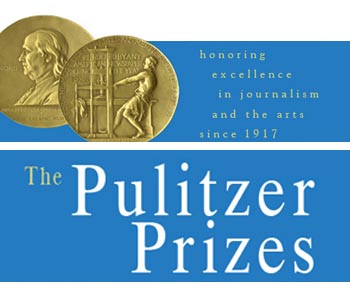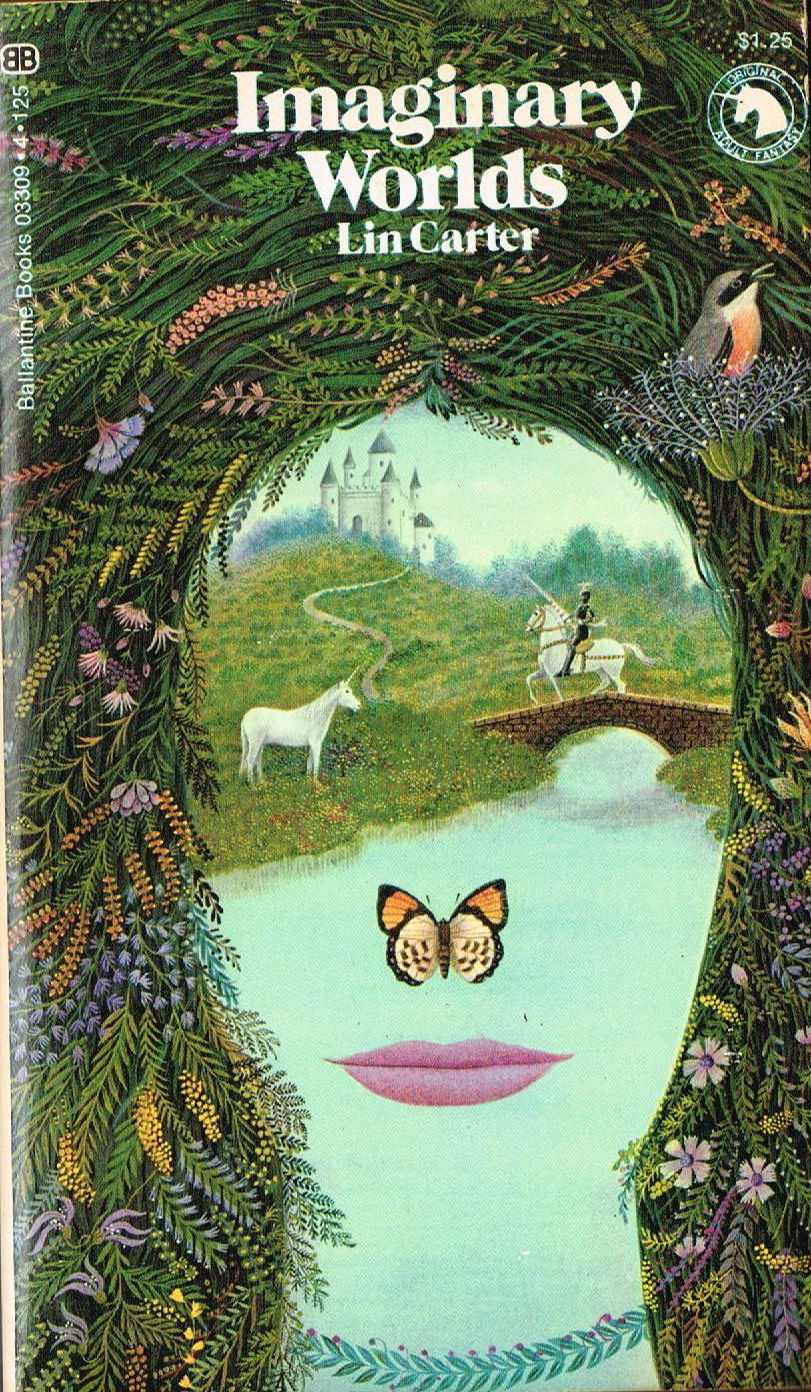
E.B. White.

Elwyn Brooks "E. B." White (July 11, 1899 – October 1, 1985)[1] was an American writer. He was a contributor to The New Yorkermagazine and a co-author of the English language style guide The Elements of Style, which is commonly known as "Strunk & White". He also wrote books for children, including Stuart Little (1945), Charlotte's Web (1952), and The Trumpet of the Swan (1970).Charlotte's Web was voted the top children's novel in a 2012 survey of School Library Journal readers, an accomplishment repeated from earlier surveys.[2]
Pulitzer Prize Special.

The Pulitzer Prize /ˈpʊlᵻtsər/[1] is an award for achievements in newspaper, magazine and online journalism, literature, and musical composition in the United States. It was established in 1917 by provisions in the will of American (Hungarian-born) Joseph Pulitzerwho had made his fortune as a newspaper publisher, and is administered by Columbia University in New York City.[2] Prizes are awarded yearly in twenty-one categories. In twenty of the categories, each winner receives a certificate and a US$10,000 cash award.[3] The winner in the public service category of the journalism competition is awarded a gold medal.[3][4]
Southern Gothic.

Southern Gothic is a subgenre of Gothic fiction in American literature that takes place in the American South.
Common themes in Southern Gothic literature include deeply flawed, disturbing or eccentric characters who may or may not dabble in hoodoo,[1] ambivalent gender roles, decayed or derelict settings,[2] grotesque situations, and other sinister events relating to or stemming from poverty, alienation, crime, or violence.
Atticus Finch.

Atticus Finch is a fictional character in author Harper Lee's Pulitzer Prize winning novel of 1960, To Kill a Mockingbird. A preliminary version of the character also appears in the novel Go Set a Watchman, written in the mid 1950s but not published until 2015. Atticus is a lawyer and resident of the fictional Maycomb County, Alabama, and the father of Jeremy "Jem" Finch and Jean Louise "Scout" Finch. Lee based the character on her own father, Amasa Coleman Lee, an Alabama lawyer, who, like Atticus, represented black defendants in a highly publicized criminal trial.[1] Book Magazine's list of The 100 Best Characters in Fiction Since 1900 names Finch as the seventh best fictional character of 20th-century literature.[2][3] In 2003 the American Film Institute voted Atticus Finch, as portrayed by Gregory Peck in the 1962 film adaptation, as the greatest hero of all American cinema.[4]
Racial Inequality.
Racial inequality can also result in diminished opportunities for members of marginalized groups, which in turn can lead to cycles of poverty and political marginalization. Racial and ethnic categories become a minority category in a society. Minority members in such a society are often subjected to discriminatory actions resulting from majority policies, including assimilation, exclusion, oppression, expulsion, and extermination.[40] For example, during the run-up to the 2012 federal elections in the United States, legislation in certain "battleground states" that claimed to target voter fraud had the effect of disenfranchising tens of thousands of primarily African American voters.[41] These types of institutional barriers to full and equal social participation have far-reaching effects within marginalized communities, including reduced economic opportunity and output, reduced educational outcomes and opportunities and reduced levels of overall health.[42]
Mockingjay.
Mockingjay is a 2010 science fiction novel by American author Suzanne Collins. It is the last installment of The Hunger Games, following 2008's The Hunger Games and 2009's Catching Fire. The book continues the story of Katniss Everdeen, who agrees to unify the districts of Panem in a rebellion against the tyrannical Capitol. The hardcover and audiobook editions of Mockingjay were published by Scholastic on August 24, 2010, six days after the ebook edition went on sale. The book sold 450,000 copies in the first week of release, exceeding the publisher's expectations. It received a generally positive reaction from critics.
The novel was adapted into two films, with The Hunger Games: Mockingjay – Part 1 released in November 2014 and The Hunger Games: Mockingjay – Part 2 released a year later.
Suzanne Collins.

Suzanne Collins (born August 10, 1962) is an American television writer and novelist, best known as the author of The New York Times best selling series The Underland Chronicles and The Hunger Games trilogy (which consists of The Hunger Games, Catching Fire, and Mockingjay).Collins was born on August 10, 1962 in Hartford, Connecticut, to Jane Brady Collins (b.1932) and Lt. Col. Michael John Collins (1931–2003),[2] a U.S. Air Force officer who served in the Korean War, Vietnam War, and was awarded the Distinguished Flying Cross and Bronze Star. She is the youngest of four children, who include Kathryn (b.1957), Andrew (b.1958), and Joan (b.1960). As the daughter of a military officer, she and her family were constantly moving. She spent her childhood in the eastern United States.[3]Collins graduated from the Alabama School of Fine Arts in Birmingham in 1980 as a Theater Arts major.[4] She completed her Bachelor of Arts degree from Indiana University in 1985 with a double major in theater and telecommunications.[5][6][7] In 1989, Collins earned her M.F.A. in dramatic writing from the New York University Tisch School of the Arts.[7]
Katniss Everdeen.
Katniss Everdeen is a fictional character and the protagonist of The Hunger Games trilogy by Suzanne Collins.[1] Her name comes from an edible plant called Sagittaria (Katniss), from Sagittarius the Archer, whose name means He that throws arrows in Latin. She is portrayed by Jennifer Lawrence in the film adaptations The Hunger Games, The Hunger Games: Catching Fire, The Hunger Games: Mockingjay – Part 1, and The Hunger Games: Mockingjay – Part 2.
Katniss and her family come from District 12, a coal-mining district that is the poorest and least populated district in the dystopian fictional autocratic nation of Panem. In the course of the first book, The Hunger Games, Katniss volunteers to replace her sister,Primrose "Prim" Everdeen, after she is chosen to compete in the Hunger Games, a televised fight to the death. Katniss, following an alliance with Rue, a young tribute from District 11 who reminded Katniss of Prim but died in the arena, joins up with fellow District 12 tribute Peeta Mellark. The pair compete in the Games together. Katniss uses her knowledge of hunting and archery to survive, and the two become the victors after defying the Capitol's attempt to force one to kill the other.
Throughout the next two novels, Catching Fire and Mockingjay, Katniss becomes a galvanizing symbol of rebellion against the oppressive Capitol.
Astronomy.

Astronomy, a natural science, is the study of celestial objects (such as stars, galaxies, planets, moons, asteroids, comets and nebulae) and processes (such as supernovae explosions, gamma ray bursts, and cosmic microwave background radiation), the physics, chemistry, and evolution of such objects and processes, and more generally all phenomena that originate outside the atmosphere of Earth. A related but distinct subject, physical cosmology, is concerned with studying the Universe as a whole.[1]
Astronomy is the oldest of the natural sciences. The early civilizations in recorded history, such as the Babylonians, Greeks, Indians,Egyptians, Nubians, Iranians, Chinese, and Maya performed methodical observations of the night sky. Historically, astronomy has included disciplines as diverse as astrometry, celestial navigation, observational astronomy and the making of calendars, but professional astronomy is nowadays often considered to be synonymous with astrophysics.[2]
During the 20th century, the field of professional astronomy split into observational and theoretical branches. Observational astronomy is focused on acquiring data from observations of astronomical objects, which is then analyzed using basic principles of physics. Theoretical astronomy is oriented toward the development of computer or analytical models to describe astronomical objects and phenomena. The two fields complement each other, with theoretical astronomy seeking to explain the observational results and observations being used to confirm theoretical results.
Asterisk.

An asterisk (*; from Late Latin asteriscus, from Ancient Greek ἀστερίσκος, asteriskos, "little star")[1][2] is a typographical symbol or glyph. It is so called because it resembles a conventional image of a star. Computer scientists and mathematicians often vocalize it as star (as, for example, in the A* search algorithm or C*-algebra). In English, an asterisk is usually five-pointed in sans-serif typefaces, six-pointed in seriftypefaces,[citation needed] and six- or eight-pointed when handwritten. It can be used as censorship. It is also used on the Internet to correct one's spelling.
The asterisk is derived from the need of the printers of family trees in feudal times for a symbol to indicate date of birth.[citation needed] The original shape was seven-armed,[citation needed] each arm like a teardrop shooting from the center.
In computer science, the asterisk is commonly used as a wildcard character, or to denote pointers, repetition, or multiplication.
Fantasy.

Fantasy is a fiction genre[1] that uses magic or other supernatural elements as a main plot element, theme, or setting. Many works within the genre take place in imaginary worlds where magic and magical creatures are common. Fantasy is generally distinguished from the genres of science fiction and horror by the expectation that it steers clear of scientific and macabre themes, respectively, though there is a great deal of overlap between the three, all of which are subgenres of speculative fiction.
In popular culture, the fantasy genre is predominantly of the medievalist form. In its broadest sense, however, fantasy comprises works by many writers, artists, filmmakers, and musicians from ancient myths and legends to many recent and popular works.
Fantasy is studied in a number of disciplines including English and other language studies, cultural studies, comparative literature, history and medieval studies. Work in this area ranges widely from the structuralist theory of Tzvetan Todorov, which emphasizes the fantastic as a liminal space, to work on the connections (political, historical and literary) between medievalism and popular culture.[2]
Imaginary Worlds.

Imaginary Worlds: the Art of Fantasy is a study of the modern literary fantasy genre written by Lin Carter. It was first published in paperback by Ballantine Books in June, 1973 as the fifty-eighth volume of its celebrated Ballantine Adult Fantasy series; it was the only nonfiction entry in the series. The book was among the earliest full-length critical works devoted to fantasy writers and the history of fantasy. It was the third of three such studies by Carter, being preceded by Tolkien: A Look Behind "The Lord of the Rings"(1969) and Lovecraft: A Look Behind the "Cthulhu Mythos" (1972). These works, together with his editorial guidance of the Ballantine Adult Fantasy series, established Carter as an authority on the genre.
James Bond and The Queen London 2012 performance.
Stuart Little Wasp.

Stuart Little is a 1999 American live-action/CGI animated film directed by Rob Minkoff. It is loosely based on the novel of the same name by E. B. White. It combines live action and computer animation. The screenplay was written by M. Night Shyamalan and Greg Brooker. The plot bears little resemblance to that of the book, as only some of the characters and one or two minor plot elements are the same. The movie's sequel more closely resembles the original novel. This movie is Minkoff's first live-action movie.
Michael J. Fox is the voice of Stuart Little. Geena Davis and Hugh Laurie star as Eleanor and Frederick Little, with Jonathan Lipnickias Stuart's big brother George Little and Nathan Lane as the voice of the family cat Snowbell.
沒有留言:
張貼留言